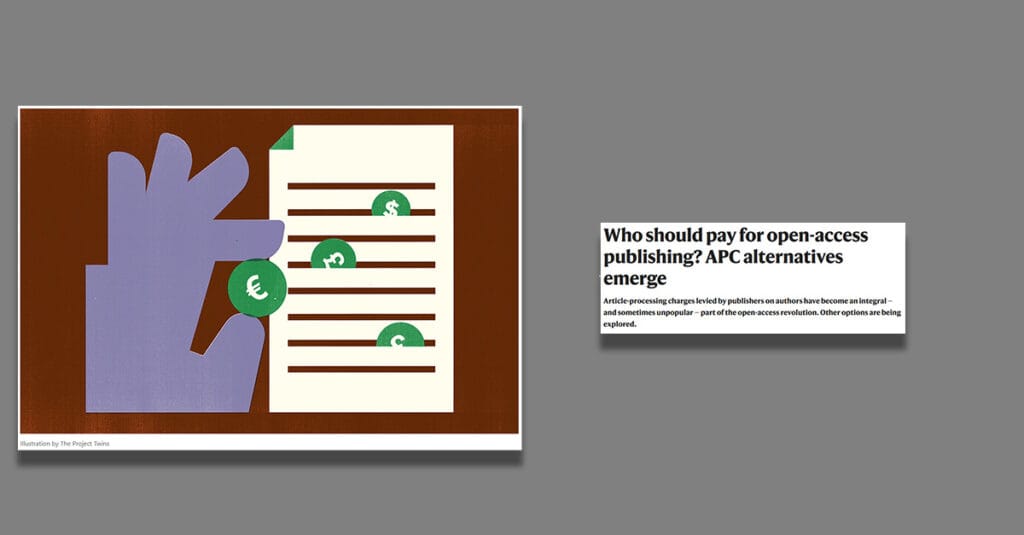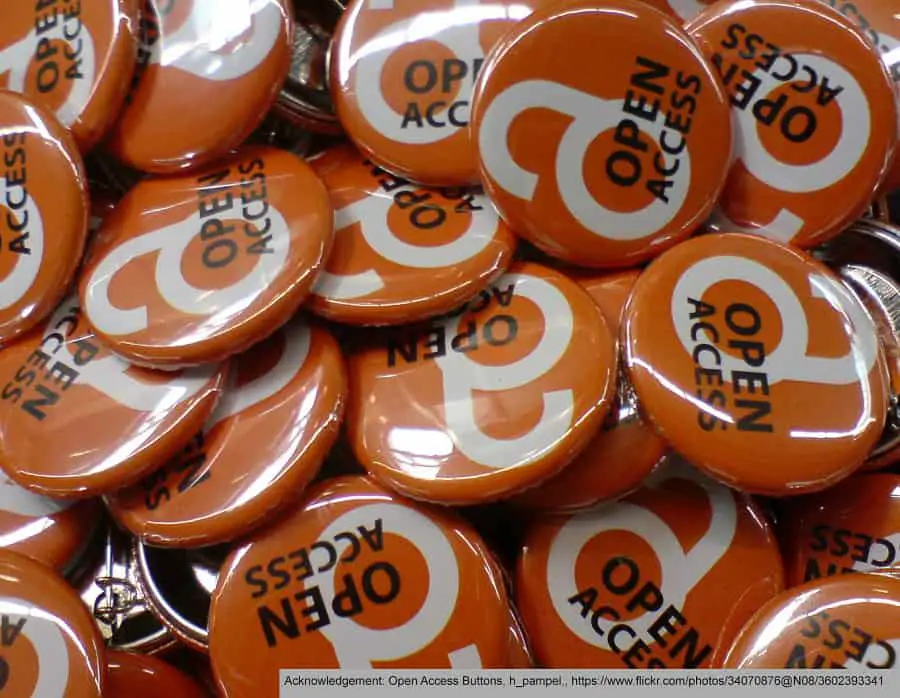In an interesting article from Katharine Sanderson, writing in Nature, various alternative to APCs (Article Processing Charges) are discussed. Here are the highlights from the article.
Background
- APCs have come under scrutiny recently. One example is a case where entire editorial boards of two neuroimaging journals resigned. They were protesting against what they believed to be excessive APCs. The APC for NeuroImage is US$3,450, and its sister journal NeuroImage doubled its APC to $1,800.
- APCs can range from <$1,000 to >$10,000. Authors either pay these directly, through research grants or via their institutions, if they have entered into contracts with publishers.
- When APCs were first introduced, there was an expectation that the fees would be relatively small, and temporary.
- There are a number of criticisms around APCs, for example:
- Some argue that journals charge exorbitant fees that are well above recouping their costs
- Some publishers are not transparent about what the APCs cover.
- Publishers often offer APC waivers, or discounts, especially to authors in lower- and middle-income countries. Critics argue that the guidelines for eligibility are often unclear and difficult to find.
- We would add, but is not in the article and is our view, that open access and APCs have provided predatory journals with the opportunity to exploit authors are who naive, keen to publish (no matter where) or are taken in by the journals/publishers that promise (among other things) fast review times.
- Publishers defend the APCs they charge:
- Taylor & Francis says it has a “transparent approach to calculating APCs” and “they support sustainable models of open access, reflecting the value of our services, and ensure we can continue to invest in robust, scalable and flexible infrastructure”.
- Springer Nature said: “The APC of Nature and the [Nature-branded] Research Journals reflects the time, investment and value of producing and publishing these journals”, adding “These journals are also highly selective, which means the journal staff invest considerable time assessing papers that are not ultimately accepted for publication”.
Alternatives
Models are emerging to replace standard APCs.
- Retain APCs but, rather than charging authors directly, institutions, funders or governments would pay publishers directly.
- SCOAP^3 is a partnership between more than 3,000 libraries, funding agencies and research institutes, administered by CERN. Publishers have a contract directly with CERN and the institutions contribute to a central pool of funds, which then covers APCs (for journals that participate in the initiative).
- In the diamond open access model, anybody can publish or read articles without fees. This model is supported by the EU council of government ministers and cOAlitionS_OA.
Rob Johnson, founder and managing director of Research Consulting, commented “To date diamond open access has relied on a decentralized model comprised of multiple small journals which are embedded in the scholarly community. This is both a strength and a weakness.” He added “The question going forward is really whether diamond open access will receive the financial support needed to allow it to scale and offer a genuine alternative to commercial publishing models.”
- PLOS, a non-profit open-access publisher, is looking at non-APC ways of publishing. Their community action publishing (CAP) model “… aims to demonstrate that we do not need to charge high APCs in order to sustain a highly selective journal. It’s based on the principle of collective action.” The CAP model charges a fixed annual fee to institutions based on the publishing activity of all authors named on a paper.
- Another PLOS model is their global equity plan. Individual institutions pay a flat fee and their researchers can then publish in specific PLOS journals.
- ASMicrobiology has announced an initiative where a journal’s content becomes open access if subscriptions to it reach a minimum target.
- Green open access enables journals to maintain paywalls for their articles but allows authors to share their manuscripts. This model is used in Science Magazine.
- ACS Publications has recently announced a variation to green open access theme. The society allows authors to make their papers immediately available, but the authors only pay the costs associated with a manuscript from when it is submitted through to the final editorial decision. This option is only available to those who do not have access to APCs.
Final Comments (from us)
APCs are, undoubtedly, a complex and controversial area and papers like the one presented here, can only help that debate and discussion.
Notes
This article is based on a tweet we made, which addressed the same topic. You can see the tweet here.


